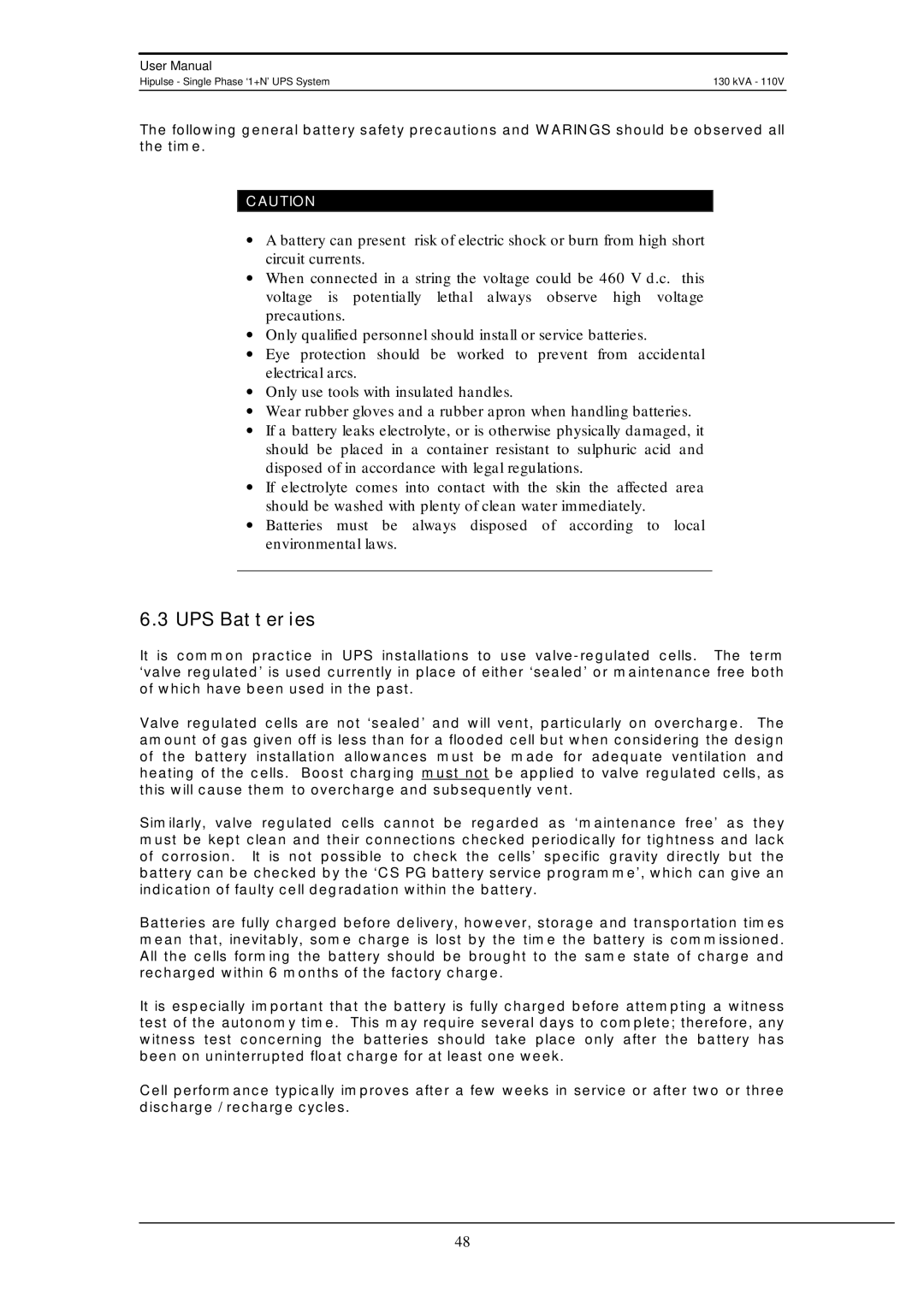
User Manual
Hipulse - Single Phase ‘1+N’ UPS System | 130 kVA - 110V |
The following general battery safety precautions and WARINGS should be observed all the time.
CAUTION
∙A battery can present risk of electric shock or burn from high short circuit currents.
∙When connected in a string the voltage could be 460 V d.c. this voltage is potentially lethal always observe high voltage precautions.
∙Only qualified personnel should install or service batteries.
∙Eye protection should be worked to prevent from accidental electrical arcs.
∙Only use tools with insulated handles.
∙Wear rubber gloves and a rubber apron when handling batteries.
∙If a battery leaks electrolyte, or is otherwise physically damaged, it should be placed in a container resistant to sulphuric acid and disposed of in accordance with legal regulations.
∙If electrolyte comes into contact with the skin the affected area should be washed with plenty of clean water immediately.
∙Batteries must be always disposed of according to local environmental laws.
6.3UPS Batteries
It is common practice in UPS installations to use
Valve regulated cells are not ‘sealed’ and will vent, particularly on overcharge. The amount of gas given off is less than for a flooded cell but when considering the design of the battery installation allowances must be made for adequate ventilation and heating of the cells. Boost charging must not be applied to valve regulated cells, as this will cause them to overcharge and subsequently vent.
Similarly, valve regulated cells cannot be regarded as ‘maintenance free’ as they must be kept clean and their connections checked periodically for tightness and lack of corrosion. It is not possible to check the cells’ specific gravity directly but the battery can be checked by the ‘CS PG battery service programme’, which can give an indication of faulty cell degradation within the battery.
Batteries are fully charged before delivery, however, storage and transportation times mean that, inevitably, some charge is lost by the time the battery is commissioned. All the cells forming the battery should be brought to the same state of charge and recharged within 6 months of the factory charge.
It is especially important that the battery is fully charged before attempting a witness test of the autonomy time. This may require several days to complete; therefore, any witness test concerning the batteries should take place only after the battery has been on uninterrupted float charge for at least one week.
Cell performance typically improves after a few weeks in service or after two or three discharge / recharge cycles.
48
